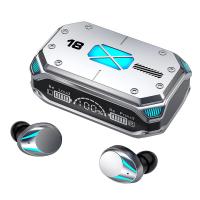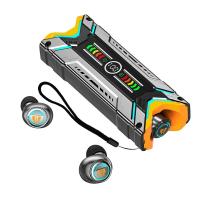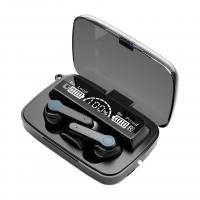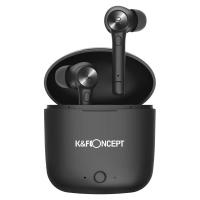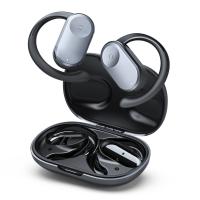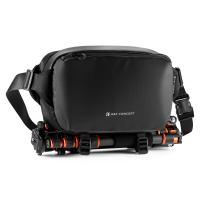Earbuds How Much?
When it comes to purchasing earbuds, consumers often find themselves navigating a sea of options, each with varying features and price points. Understanding the different factors that influence the cost of earbuds can help you make an informed decision that aligns with your needs and budget. In this article, we will delve into the various aspects that determine the price of earbuds, from basic models to high-end options, and provide practical advice on how to choose the right pair for you.
Understanding the Price Spectrum

Earbuds can range from as low as $10 to as high as several hundred dollars. The price is influenced by several factors, including brand reputation, sound quality, additional features, and build quality. Here’s a breakdown of what you can expect at different price points:
1. Budget Earbuds ($10 - $50)
- Sound Quality: Basic sound quality, often lacking in bass and clarity.
- Build Quality: Generally made from cheaper materials, which may affect durability.
- Features: Limited features, usually no noise cancellation or advanced connectivity options.
- Use Case: Suitable for casual listening, workouts, or as a backup pair.
2. Mid-Range Earbuds ($50 - $150)
- Sound Quality: Improved sound quality with better bass and clarity.
- Build Quality: More durable materials, often with better ergonomics.
- Features: May include noise isolation, basic noise cancellation, and better connectivity options.
- Use Case: Ideal for regular use, commuting, and moderate audiophiles.
3. High-End Earbuds ($150 and above)
- Sound Quality: Superior sound quality with balanced audio, deep bass, and clear highs.
- Build Quality: Premium materials, often with a focus on comfort and durability.
- Features: Advanced noise cancellation, high-resolution audio, wireless charging, and smart features like voice assistants.
- Use Case: Perfect for audiophiles, frequent travelers, and those who prioritize audio quality and advanced features.
Key Factors Influencing Earbud Prices

1. Brand Reputation
- Established brands like Apple, Sony, and Bose often command higher prices due to their reputation for quality and innovation. However, lesser-known brands can offer competitive features at a lower cost.
2. Sound Quality
- The quality of the drivers, the technology used (such as balanced armature or dynamic drivers), and the overall tuning of the earbuds significantly impact the price. High-fidelity sound often comes at a premium.
3. Noise Cancellation
- Active Noise Cancellation (ANC) is a sought-after feature that can significantly increase the cost of earbuds. ANC technology uses microphones to pick up ambient noise and counteract it with anti-noise signals, providing a quieter listening experience.
4. Connectivity
- Wireless earbuds, especially those with advanced Bluetooth codecs like aptX or LDAC, tend to be more expensive than wired options. True wireless earbuds, which have no connecting wires at all, are also generally pricier.
5. Battery Life
- Longer battery life and quick charging capabilities can add to the cost. High-end models often offer extended playtime and convenient charging cases.
6. Build and Comfort
- Premium materials such as metal housings, memory foam tips, and ergonomic designs contribute to higher prices. Comfort is crucial for long listening sessions, and well-designed earbuds can justify a higher price tag.
7. Additional Features
- Features like water resistance, touch controls, customizable sound profiles, and integration with virtual assistants (e.g., Siri, Google Assistant) can also drive up the cost.
Practical Tips for Choosing the Right Earbuds

1. Define Your Priorities
- Determine what features are most important to you. If you prioritize sound quality, be prepared to invest in a higher-end model. If you need earbuds for workouts, look for options with water resistance and a secure fit.
2. Set a Budget
- Establish a budget before you start shopping. This will help narrow down your options and prevent overspending. Remember that you often get what you pay for, but there are also great value options available.
3. Read Reviews
- User reviews and professional reviews can provide valuable insights into the performance and durability of different models. Look for reviews that mention the aspects you care about most, such as sound quality, comfort, or battery life.
4. Consider the Warranty
- A good warranty can provide peace of mind, especially for more expensive purchases. Check the warranty terms and consider the brand’s reputation for customer service.
5. Try Before You Buy
- If possible, try out different models in-store to get a feel for their comfort and sound quality. This can be particularly helpful for ensuring a good fit, which is crucial for both comfort and sound isolation.
6. Look for Deals
- Keep an eye out for sales, discounts, and refurbished models. You can often find high-quality earbuds at a reduced price if you’re patient and shop around.
The cost of earbuds varies widely based on a range of factors, including brand, sound quality, features, and build quality. By understanding these factors and defining your priorities, you can make an informed decision that meets your needs and fits your budget. Whether you’re looking for a basic pair for casual listening or a high-end model for an immersive audio experience, there’s a pair of earbuds out there for you. Happy listening!

